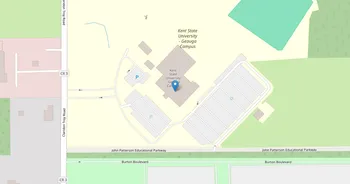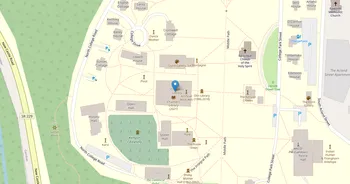Kent State University, Salem : Overview, Courses, Scholarships & Rankings
About Kent State University
Set in a small Ohio town, Kent State University at Salem pairs a calm setting with practical academics. The campus is known for strengths in health and science, business, and education, taught in small, discussion-based classes. Students find modern labs, simulation rooms, a focused library, and tutoring, advising, and writing support. It has a reputation for being friendly to commuters, with flexible study spaces.
Student life runs on close-knit energy, with clubs, service projects, and low-key intramurals, plus nearby parks for a quick reset. The culture is down to earth and hands-on, with teamwork baked in. Career prep comes through internships with regional employers and practical coaching, while Salem's downtown adds coffee shops and community events, and a quiet neighbor-helping-neighbor spirit shapes the campus.
Key Institutional Details
Contact & Profile
Academic & Institutional
Academic Programs & Fields of Study
Kent State University, Salem offers 11 degree programs across 6 major academic fields, graduating approximately 131 students annually. The most popular fields by graduate volume are Liberal Arts (1 programs, 55 graduates), Health (4 programs, 54 graduates), Education (1 programs, 11 graduates), Business (3 programs, 9 graduates) and Agriculture (1 programs, 1 graduates). Explore program details, award levels, and graduate demographics below.
Liberal Arts (1 programs, 55 graduates)
Liberal Arts Education, General Studies and Humanities
| Program Name | Graduates | Gender Distribution | Award Levels | CIP Code |
|---|---|---|---|---|
| Liberal Arts and Humanities | 55 |
|
Associate's
|
24.0199 |
Health (4 programs, 54 graduates)
Healthcare Professions, Medical Sciences and Clinical Practice
| Program Name | Graduates | Gender Distribution | Award Levels | CIP Code |
|---|---|---|---|---|
| Medical Radiologic Technology | 45 |
|
Associate's
Bachelor's
|
51.0907 |
| Magnetic Resonance Imaging Technology | 6 |
|
Other Award
|
51.0920 |
| Medical Insurance Billing | 2 |
|
Other Award
|
51.0714 |
| Radiologic Technology | 1 |
|
Other Award
|
51.0911 |
Education (1 programs, 11 graduates)
Educational Sciences, Teaching Methods and Pedagogy
| Program Name | Graduates | Gender Distribution | Award Levels | CIP Code |
|---|---|---|---|---|
| Kindergarten and Preschool Education | 11 |
|
Associate's
|
13.1209 |
Business (3 programs, 9 graduates)
Business Administration, Marketing and Entrepreneurship
| Program Name | Graduates | Gender Distribution | Award Levels | CIP Code |
|---|---|---|---|---|
| Insurance Studies | 6 |
|
Bachelor's
|
52.1701 |
| Administrative Assistant Science | 2 |
|
Associate's
|
52.0401 |
| Business Administration | 1 |
|
Associate's
|
52.0101 |
Agriculture (1 programs, 1 graduates)
Agricultural Sciences, Animal Husbandry and Veterinary Medicine
| Program Name | Graduates | Gender Distribution | Award Levels | CIP Code |
|---|---|---|---|---|
| Applied Horticulture | 1 |
|
Bachelor's
|
01.0601 |
Computer & IT (1 programs, 1 graduates)
Computer Science, Information Technology and Cybersecurity
| Program Name | Graduates | Gender Distribution | Award Levels | CIP Code |
|---|---|---|---|---|
| Computer Support Specialist | 1 |
|
Bachelor's
|
11.1006 |
Tuition, Fees & Estimated Costs
Overview of tuition rates, housing, and other annual education expenses for undergraduate and graduate students
Financial Aid & Student Support
Summary of scholarships, grants, student loans, and financial aid statistics for undergraduate students
Student Success Metrics
Graduation rates and post-graduation earnings to help assess student outcomes and long-term value of education.
Loan Burden & Repayment Outcomes
Breakdown of loan repayment rates and student debt levels by income and dependency status.
Frequently Asked Questions
Find answers to the most common questions about Kent State University, Salem
How much does it cost to attend Kent State University, Salem?
The annual tuition at Kent State University, Salem is $7,428 for in-state students and $16,541 for out-of-state students. When including room and board, books, and other expenses, the total estimated cost is approximately $8,628 for in-state students and $17,741 for out-of-state students. Additional costs include room and board $11,810 (off-campus) and books and supplies $1,200.
Data based on IPEDS program completions for 2022-2023 academic year. Tuition and cost estimates are approximate and may not include all fees, personal expenses, or transportation costs.
What academic programs and degree levels does Kent State University, Salem offer?
Kent State University, Salem offers 11 academic programs across 6 major fields of study, with available degree levels: Associate's, Bachelor's, Other Award.
Most popular program areas include:
- Liberal Arts Education, General Studies and Humanities (1 programs)
- Healthcare Professions, Medical Sciences and Clinical Practice (4 programs)
- Educational Sciences, Teaching Methods and Pedagogy (1 programs)
- Business Administration, Marketing and Entrepreneurship (3 programs)
- Agricultural Sciences, Animal Husbandry and Veterinary Medicine (1 programs)
Data based on IPEDS program completions for 2023-2024 academic year. Numbers reflect programs where students graduated, not all offered programs.
What financial aid and scholarships are available at Kent State University, Salem?
Kent State University, Salem provides financial aid to 10% of first-time, full-time students, with average grants of $4,527 and average loans of $5,495.
Average financial aid amounts by type:
- Pell grants: $4,977
- Institutional grants: $1,767
- Federal loans: $5,396
The university supports 54 students with grants and 39 students with loans annually.
Data based on IPEDS for 2022-2023 academic year. Financial aid amounts and percentages may vary by program, enrollment status, and individual circumstances.
What is the average salary for Kent State University, Salem graduates?
Kent State University, Salem graduates earn a median salary of $40,179 after 6 years and $45,388 after 10 years.
The salary range 10 years after graduation spans from $27,117 (25th percentile) to $66,038 (75th percentile), with top earners reaching $69,200 (90th percentile).
Data based on IPEDS for 2022-2023 academic year. Salary data reflects graduates who received federal financial aid (approximately 60% of all graduates). Actual earnings may vary significantly based on program, location, and individual circumstances.
Related Universities




Found something useful? Help others discover it too! Share with friends, on social media, or save for later - every share helps someone find the information they need.